Discriminative Multi-Level Reconstruction under Compact Latent Space for One-Class Novelty Detection
Jaewoo Park,
Yoon Gyo Jung,
Andrew Teoh

Auto-TLDR; Discriminative Compact AE for One-Class novelty detection and Adversarial Example Detection
Similar papers
A Joint Representation Learning and Feature Modeling Approach for One-Class Recognition
Pramuditha Perera, Vishal Patel

Auto-TLDR; Combining Generative Features and One-Class Classification for Effective One-class Recognition
Abstract Slides Poster Similar
Combining GANs and AutoEncoders for Efficient Anomaly Detection
Fabio Carrara, Giuseppe Amato, Luca Brombin, Fabrizio Falchi, Claudio Gennaro
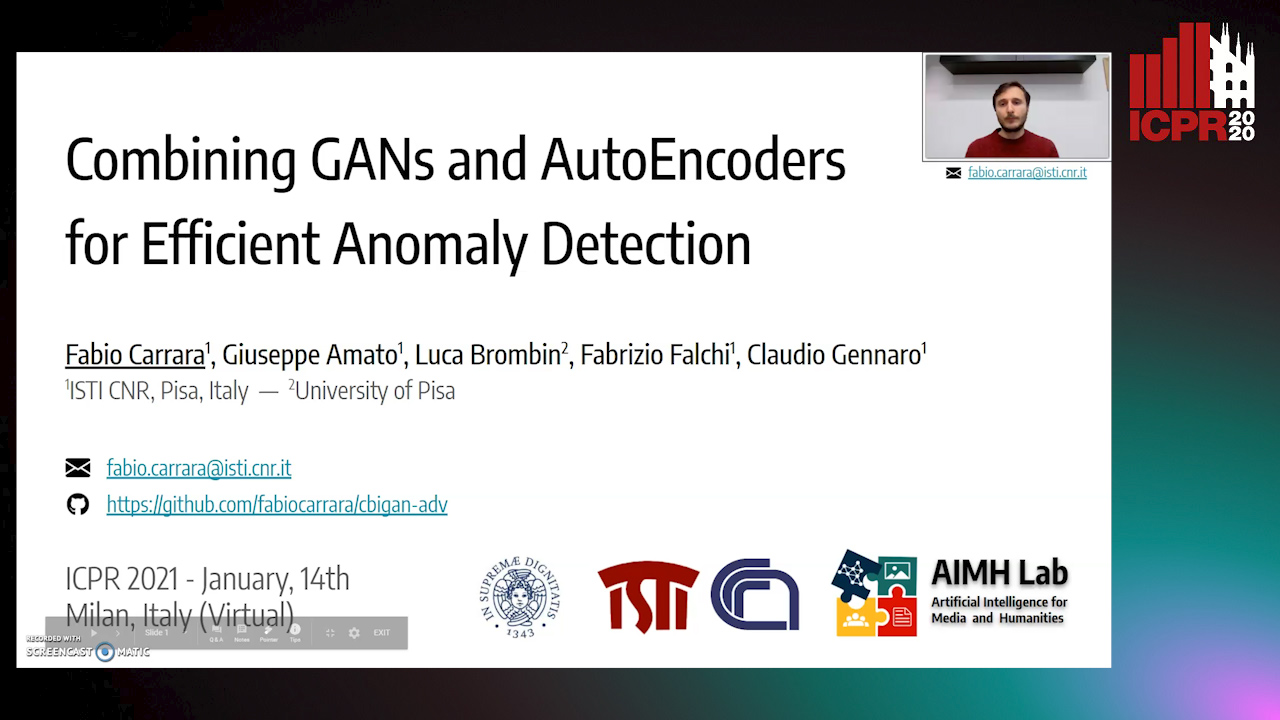
Auto-TLDR; CBIGAN: Anomaly Detection in Images with Consistency Constrained BiGAN
Abstract Slides Poster Similar
Revisiting ImprovedGAN with Metric Learning for Semi-Supervised Learning
Jaewoo Park, Yoon Gyo Jung, Andrew Teoh

Auto-TLDR; Improving ImprovedGAN with Metric Learning for Semi-supervised Learning
Abstract Slides Poster Similar
Improved anomaly detection by training an autoencoder with skip connections on images corrupted with Stain-shaped noise
Anne-Sophie Collin, Christophe De Vleeschouwer

Auto-TLDR; Autoencoder with Skip Connections for Anomaly Detection
Abstract Slides Poster Similar
Variational Deep Embedding Clustering by Augmented Mutual Information Maximization
Qiang Ji, Yanfeng Sun, Yongli Hu, Baocai Yin

Auto-TLDR; Clustering by Augmented Mutual Information maximization for Deep Embedding
Abstract Slides Poster Similar
Modeling the Distribution of Normal Data in Pre-Trained Deep Features for Anomaly Detection
Oliver Rippel, Patrick Mertens, Dorit Merhof
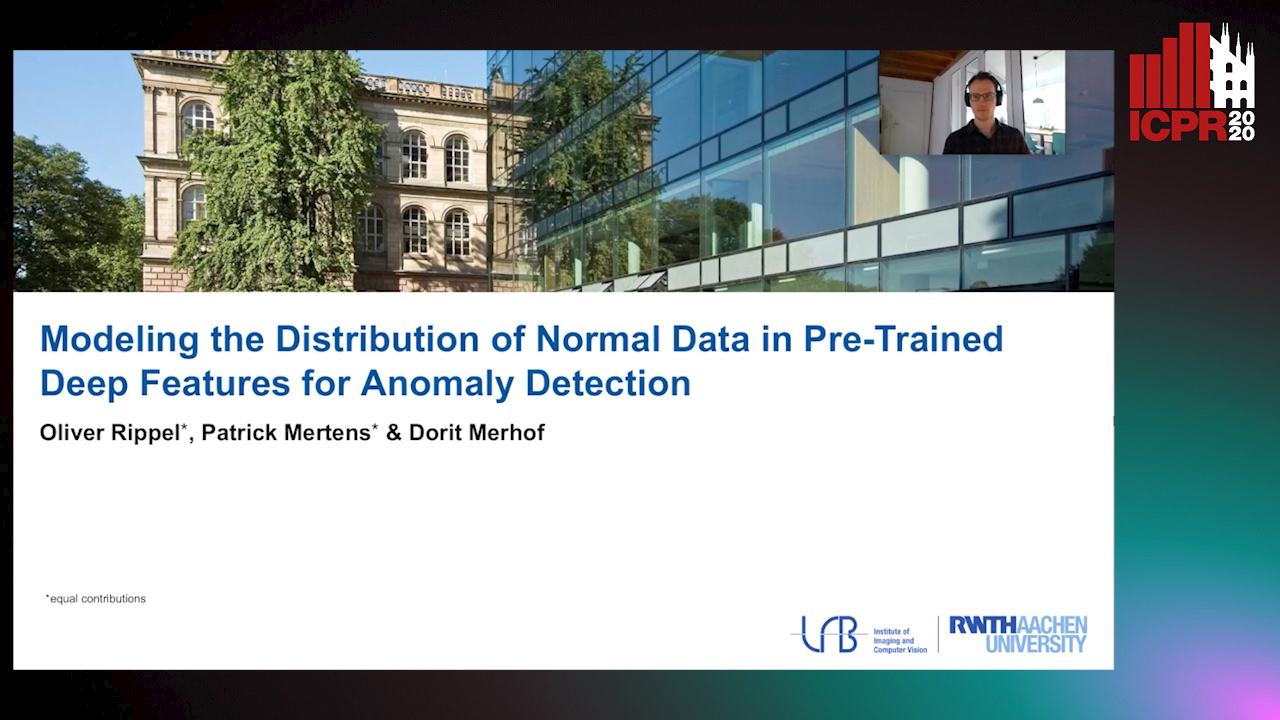
Auto-TLDR; Deep Feature Representations for Anomaly Detection in Images
Abstract Slides Poster Similar
Beyond Cross-Entropy: Learning Highly Separable Feature Distributions for Robust and Accurate Classification
Arslan Ali, Andrea Migliorati, Tiziano Bianchi, Enrico Magli

Auto-TLDR; Gaussian class-conditional simplex loss for adversarial robust multiclass classifiers
Abstract Slides Poster Similar
IDA-GAN: A Novel Imbalanced Data Augmentation GAN

Auto-TLDR; IDA-GAN: Generative Adversarial Networks for Imbalanced Data Augmentation
Abstract Slides Poster Similar
Evaluation of Anomaly Detection Algorithms for the Real-World Applications
Marija Ivanovska, Domen Tabernik, Danijel Skocaj, Janez Pers

Auto-TLDR; Evaluating Anomaly Detection Algorithms for Practical Applications
Abstract Slides Poster Similar
Variational Inference with Latent Space Quantization for Adversarial Resilience
Vinay Kyatham, Deepak Mishra, Prathosh A.P.

Auto-TLDR; A Generalized Defense Mechanism for Adversarial Attacks on Data Manifolds
Abstract Slides Poster Similar
Generative Latent Implicit Conditional Optimization When Learning from Small Sample

Auto-TLDR; GLICO: Generative Latent Implicit Conditional Optimization for Small Sample Learning
Abstract Slides Poster Similar
Attack-Agnostic Adversarial Detection on Medical Data Using Explainable Machine Learning
Matthew Watson, Noura Al Moubayed

Auto-TLDR; Explainability-based Detection of Adversarial Samples on EHR and Chest X-Ray Data
Abstract Slides Poster Similar
Video Anomaly Detection by Estimating Likelihood of Representations

Auto-TLDR; Video Anomaly Detection in the latent feature space using a deep probabilistic model
Abstract Slides Poster Similar
AVAE: Adversarial Variational Auto Encoder
Antoine Plumerault, Hervé Le Borgne, Celine Hudelot
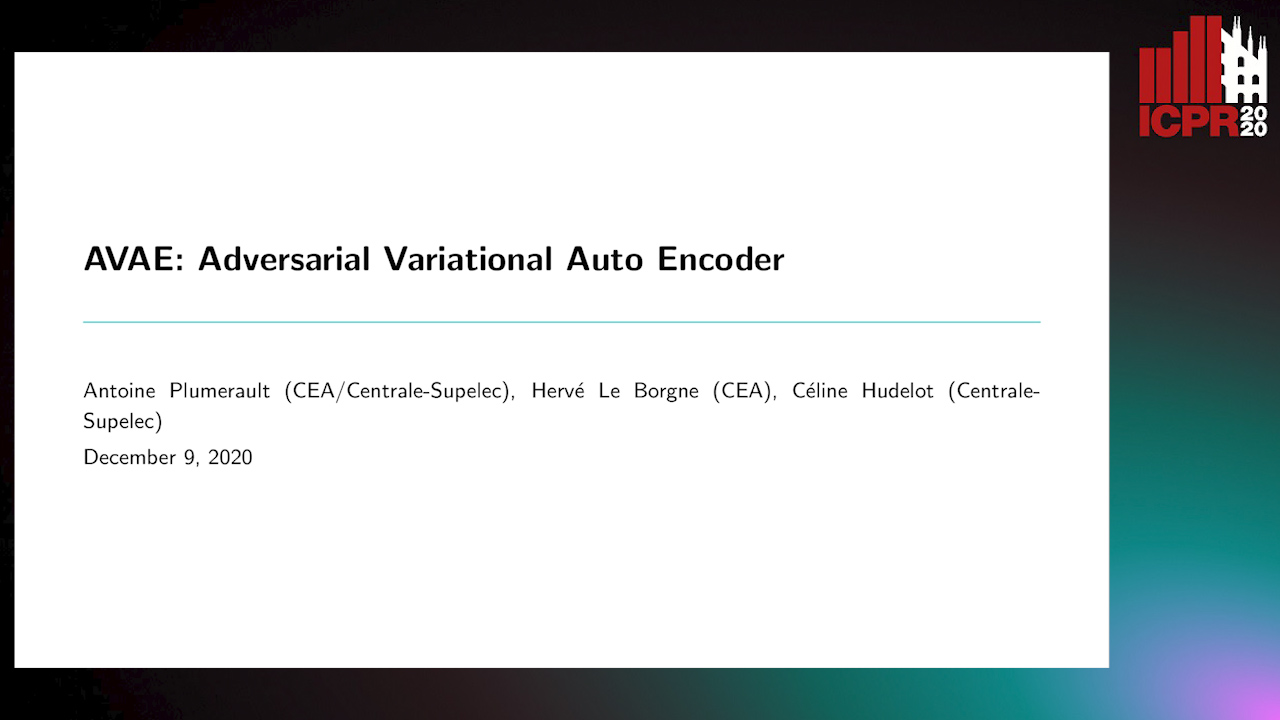
Auto-TLDR; Combining VAE and GAN for Realistic Image Generation
Abstract Slides Poster Similar
Adversarial Encoder-Multi-Task-Decoder for Multi-Stage Processes
Andre Mendes, Julian Togelius, Leandro Dos Santos Coelho

Auto-TLDR; Multi-Task Learning and Semi-Supervised Learning for Multi-Stage Processes
Variational Capsule Encoder
Harish Raviprakash, Syed Anwar, Ulas Bagci

Auto-TLDR; Bayesian Capsule Networks for Representation Learning in latent space
Abstract Slides Poster Similar
Semantics-Guided Representation Learning with Applications to Visual Synthesis
Jia-Wei Yan, Ci-Siang Lin, Fu-En Yang, Yu-Jhe Li, Yu-Chiang Frank Wang
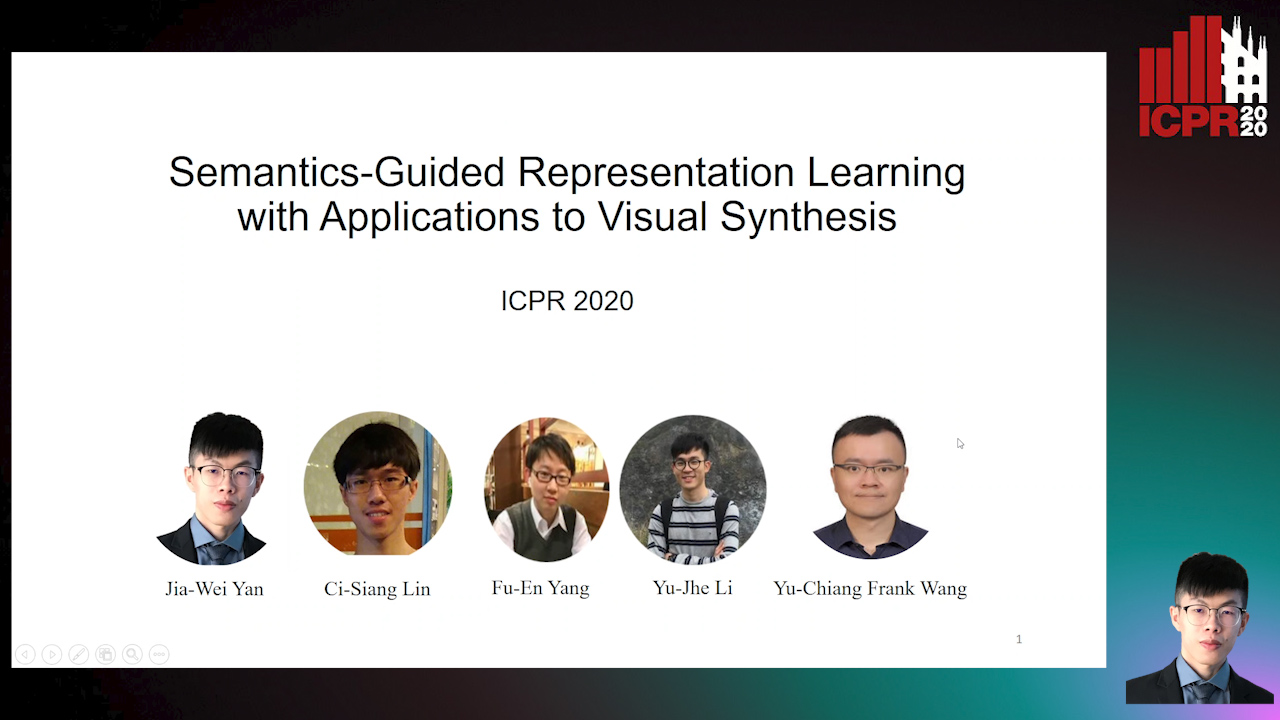
Auto-TLDR; Learning Interpretable and Interpolatable Latent Representations for Visual Synthesis
Abstract Slides Poster Similar
Reducing the Variance of Variational Estimates of Mutual Information by Limiting the Critic's Hypothesis Space to RKHS
Aditya Sreekar P, Ujjwal Tiwari, Anoop Namboodiri

Auto-TLDR; Mutual Information Estimation from Variational Lower Bounds Using a Critic's Hypothesis Space
Mutual Information Based Method for Unsupervised Disentanglement of Video Representation
Aditya Sreekar P, Ujjwal Tiwari, Anoop Namboodiri

Auto-TLDR; MIPAE: Mutual Information Predictive Auto-Encoder for Video Prediction
Abstract Slides Poster Similar
Phase Retrieval Using Conditional Generative Adversarial Networks
Tobias Uelwer, Alexander Oberstraß, Stefan Harmeling

Auto-TLDR; Conditional Generative Adversarial Networks for Phase Retrieval
Abstract Slides Poster Similar
On the Evaluation of Generative Adversarial Networks by Discriminative Models
Amirsina Torfi, Mohammadreza Beyki, Edward Alan Fox

Auto-TLDR; Domain-agnostic GAN Evaluation with Siamese Neural Networks
Abstract Slides Poster Similar
Separation of Aleatoric and Epistemic Uncertainty in Deterministic Deep Neural Networks
Denis Huseljic, Bernhard Sick, Marek Herde, Daniel Kottke

Auto-TLDR; AE-DNN: Modeling Uncertainty in Deep Neural Networks
Abstract Slides Poster Similar
On-Manifold Adversarial Data Augmentation Improves Uncertainty Calibration
Kanil Patel, William Beluch, Dan Zhang, Michael Pfeiffer, Bin Yang

Auto-TLDR; On-Manifold Adversarial Data Augmentation for Uncertainty Estimation
Image Representation Learning by Transformation Regression
Xifeng Guo, Jiyuan Liu, Sihang Zhou, En Zhu, Shihao Dong

Auto-TLDR; Self-supervised Image Representation Learning using Continuous Parameter Prediction
Abstract Slides Poster Similar
Anomaly Detection, Localization and Classification for Railway Inspection
Riccardo Gasparini, Andrea D'Eusanio, Guido Borghi, Stefano Pini, Giuseppe Scaglione, Simone Calderara, Eugenio Fedeli, Rita Cucchiara

Auto-TLDR; Anomaly Detection and Localization using thermal images in the lowlight environment
NeuralFP: Out-Of-Distribution Detection Using Fingerprints of Neural Networks
Wei-Han Lee, Steve Millman, Nirmit Desai, Mudhakar Srivatsa, Changchang Liu

Auto-TLDR; NeuralFP: Detecting Out-of-Distribution Records Using Neural Network Models
Abstract Slides Poster Similar
Learning Interpretable Representation for 3D Point Clouds
Feng-Guang Su, Ci-Siang Lin, Yu-Chiang Frank Wang
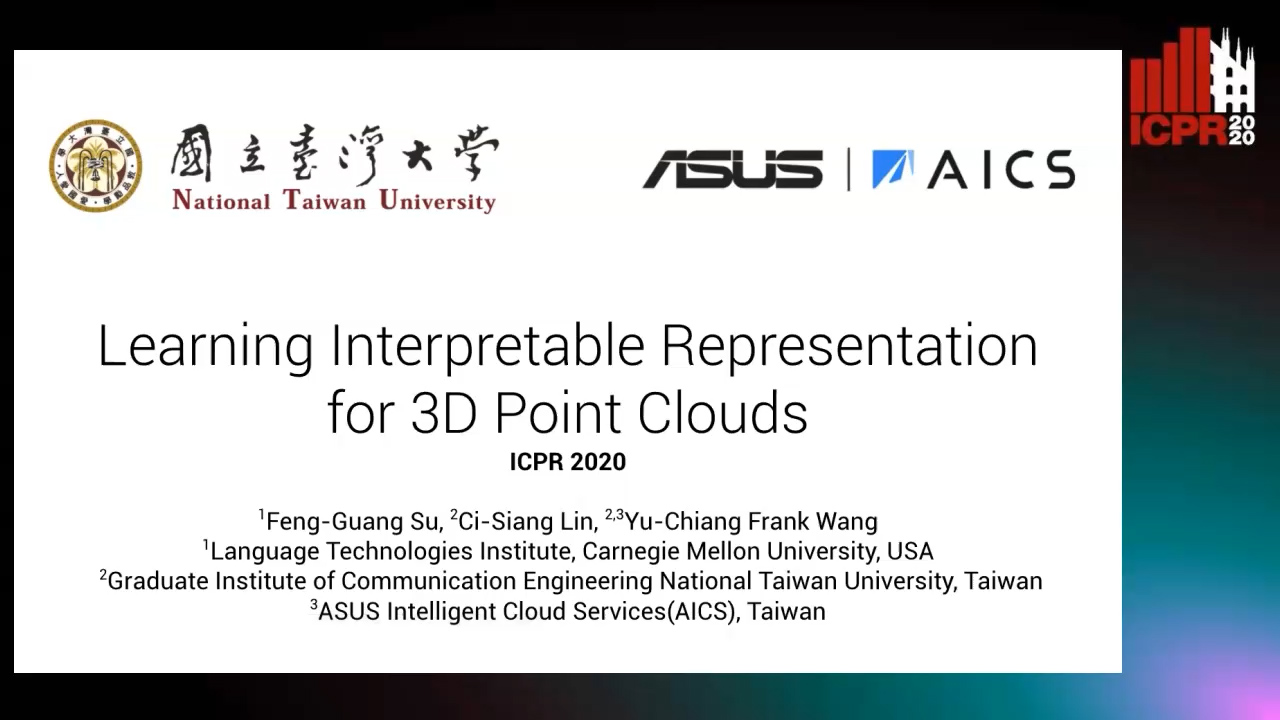
Auto-TLDR; Disentangling Body-type and Pose Information from 3D Point Clouds Using Adversarial Learning
Abstract Slides Poster Similar
Boundary Optimised Samples Training for Detecting Out-Of-Distribution Images
Luca Marson, Vladimir Li, Atsuto Maki

Auto-TLDR; Boundary Optimised Samples for Out-of-Distribution Input Detection in Deep Convolutional Networks
Abstract Slides Poster Similar
Adaptive Noise Injection for Training Stochastic Student Networks from Deterministic Teachers
Yi Xiang Marcus Tan, Yuval Elovici, Alexander Binder

Auto-TLDR; Adaptive Stochastic Networks for Adversarial Attacks
Parallel Network to Learn Novelty from the Known
Shuaiyuan Du, Chaoyi Hong, Zhiyu Pan, Chen Feng, Zhiguo Cao
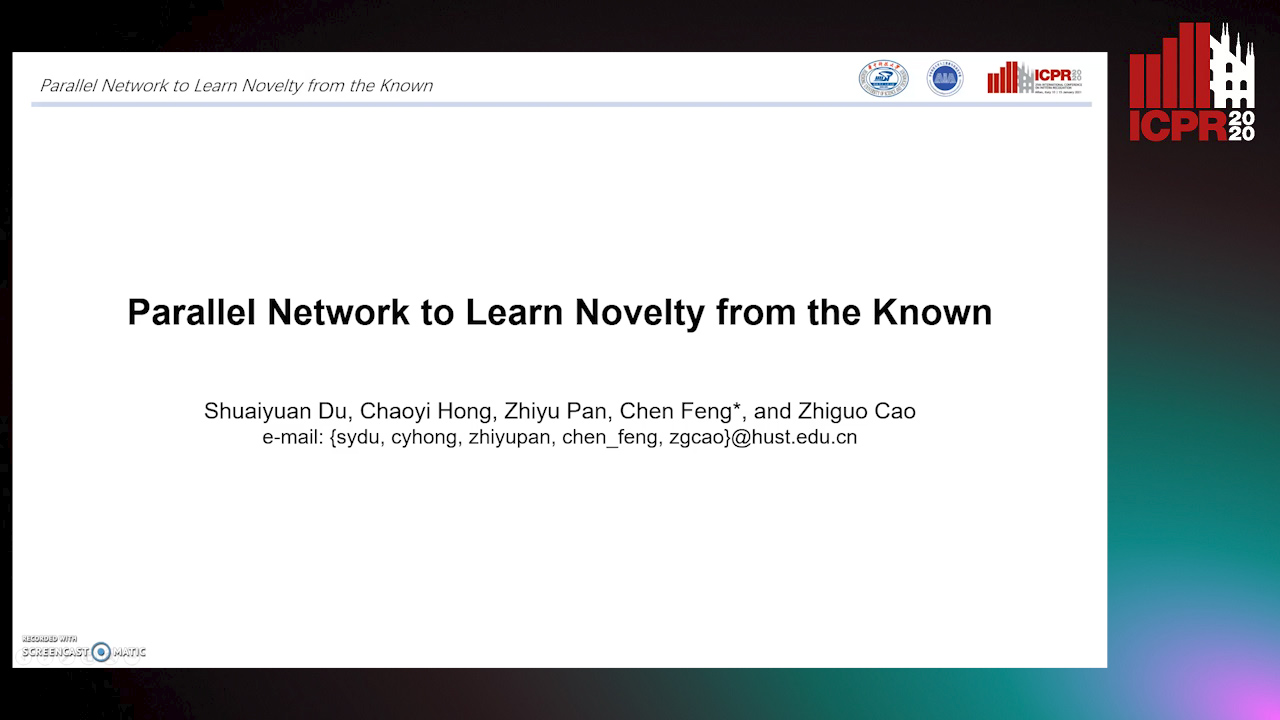
Auto-TLDR; Trainable Parallel Network for Pseudo-Novel Detection
Abstract Slides Poster Similar
Pretraining Image Encoders without Reconstruction Via Feature Prediction Loss
Gustav Grund Pihlgren, Fredrik Sandin, Marcus Liwicki

Auto-TLDR; Feature Prediction Loss for Autoencoder-based Pretraining of Image Encoders
Automatic Detection of Stationary Waves in the Venus’ Atmosphere Using Deep Generative Models
Minori Narita, Daiki Kimura, Takeshi Imamura
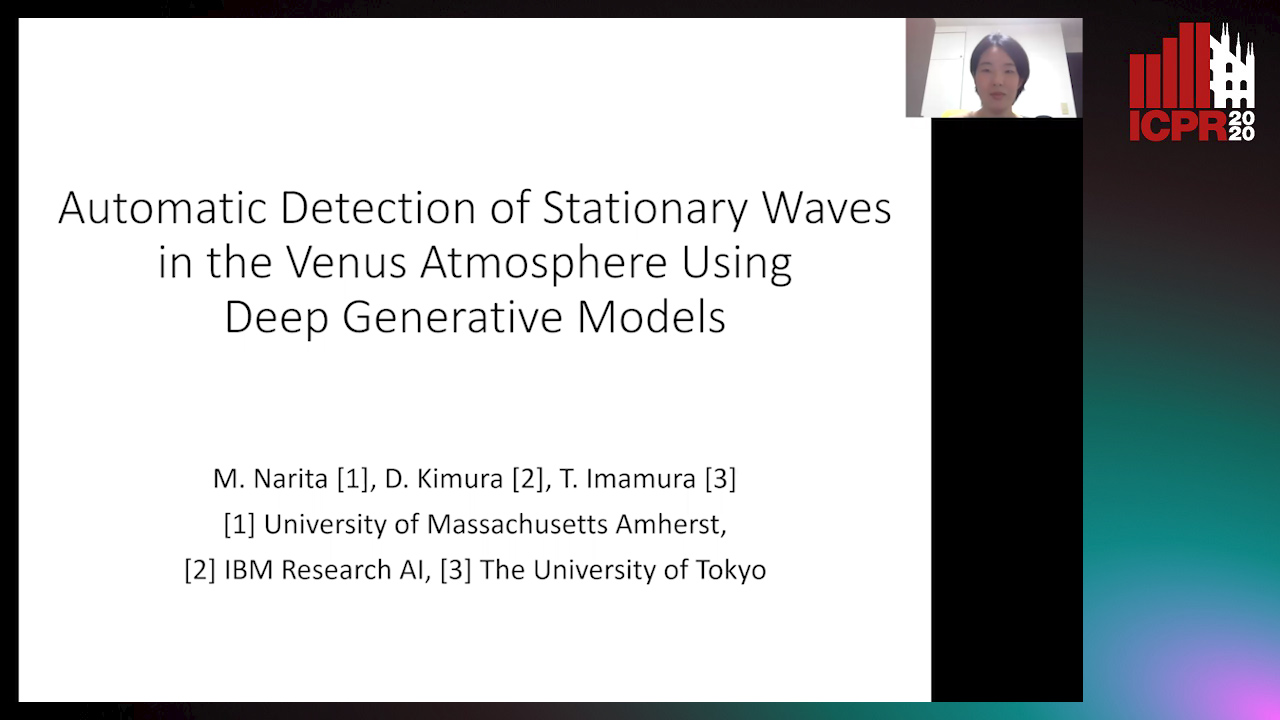
Auto-TLDR; Anomaly Detection of Large Bow-shaped Structures on the Venus Clouds using Variational Auto-encoder and Attention Maps
Abstract Slides Poster Similar
Generative Deep-Neural-Network Mixture Modeling with Semi-Supervised MinMax+EM Learning

Auto-TLDR; Semi-supervised Deep Neural Networks for Generative Mixture Modeling and Clustering
Abstract Slides Poster Similar
PoseCVAE: Anomalous Human Activity Detection
Yashswi Jain, Ashvini Kumar Sharma, Rajbabu Velmurugan, Biplab Banerjee

Auto-TLDR; PoseCVAE: Anomalous Human Activity Detection Using Generative Modeling
Abstract Slides Poster Similar
Super-Resolution Guided Pore Detection for Fingerprint Recognition
Syeda Nyma Ferdous, Ali Dabouei, Jeremy Dawson, Nasser M. Nasarabadi

Auto-TLDR; Super-Resolution Generative Adversarial Network for Fingerprint Recognition Using Pore Features
Abstract Slides Poster Similar
N2D: (Not Too) Deep Clustering Via Clustering the Local Manifold of an Autoencoded Embedding
Ryan Mcconville, Raul Santos-Rodriguez, Robert Piechocki, Ian Craddock

Auto-TLDR; Local Manifold Learning for Deep Clustering on Autoencoded Embeddings
GAN-Based Gaussian Mixture Model Responsibility Learning
Wanming Huang, Yi Da Xu, Shuai Jiang, Xuan Liang, Ian Oppermann
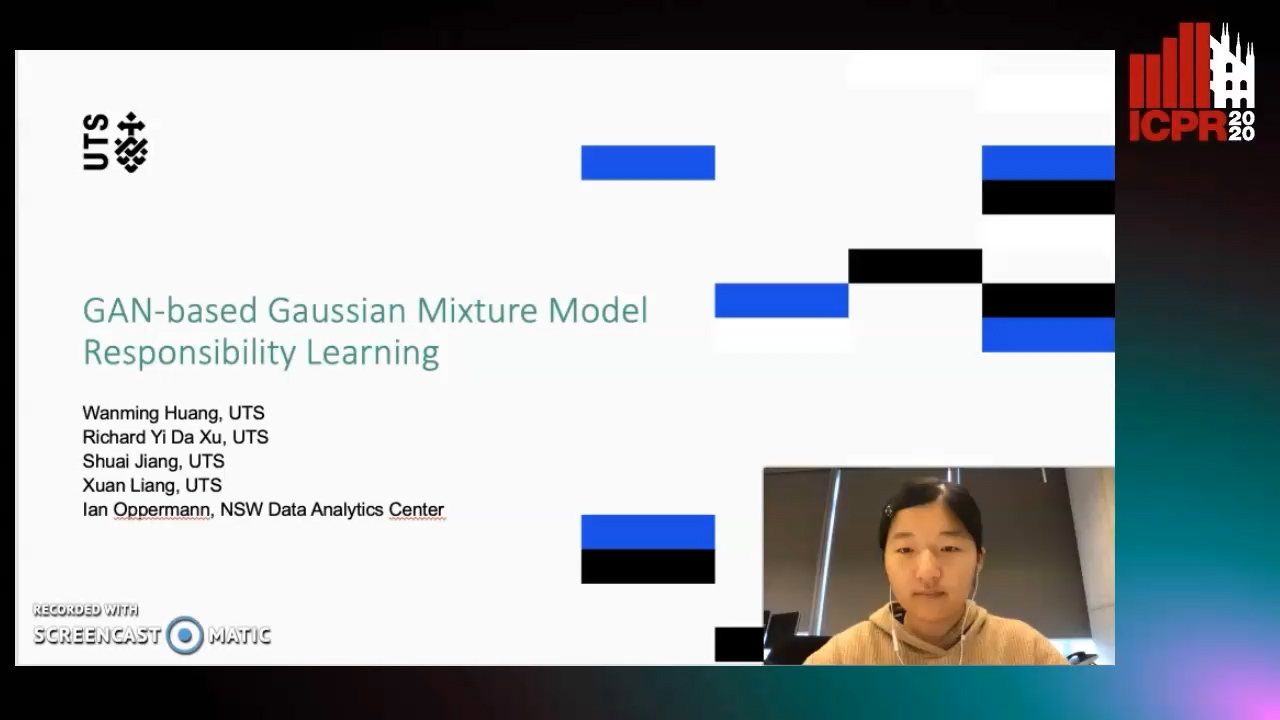
Auto-TLDR; Posterior Consistency Module for Gaussian Mixture Model
Abstract Slides Poster Similar
Disentangled Representation Learning for Controllable Image Synthesis: An Information-Theoretic Perspective
Shichang Tang, Xu Zhou, Xuming He, Yi Ma

Auto-TLDR; Controllable Image Synthesis in Deep Generative Models using Variational Auto-Encoder
Abstract Slides Poster Similar
AdaFilter: Adaptive Filter Design with Local Image Basis Decomposition for Optimizing Image Recognition Preprocessing
Aiga Suzuki, Keiichi Ito, Takahide Ibe, Nobuyuki Otsu
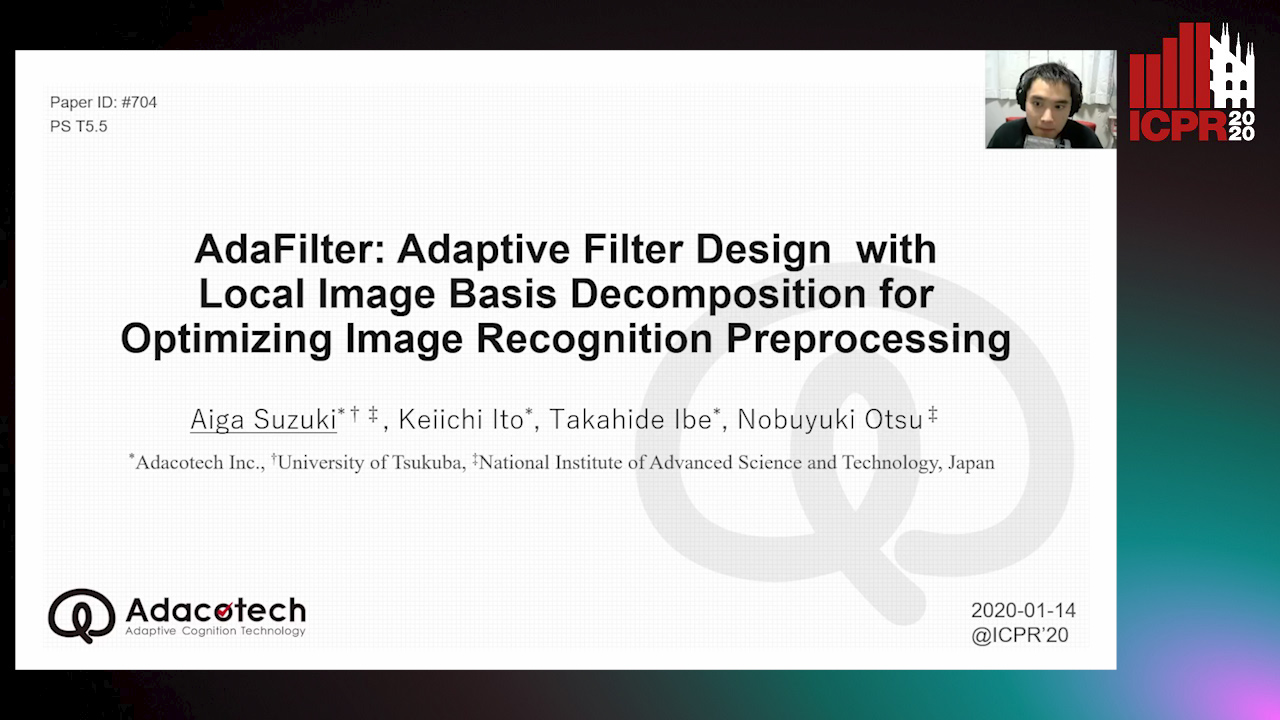
Auto-TLDR; Optimal Preprocessing Filtering for Pattern Recognition Using Higher-Order Local Auto-Correlation
Abstract Slides Poster Similar
Hierarchical Mixtures of Generators for Adversarial Learning
Alper Ahmetoğlu, Ethem Alpaydin
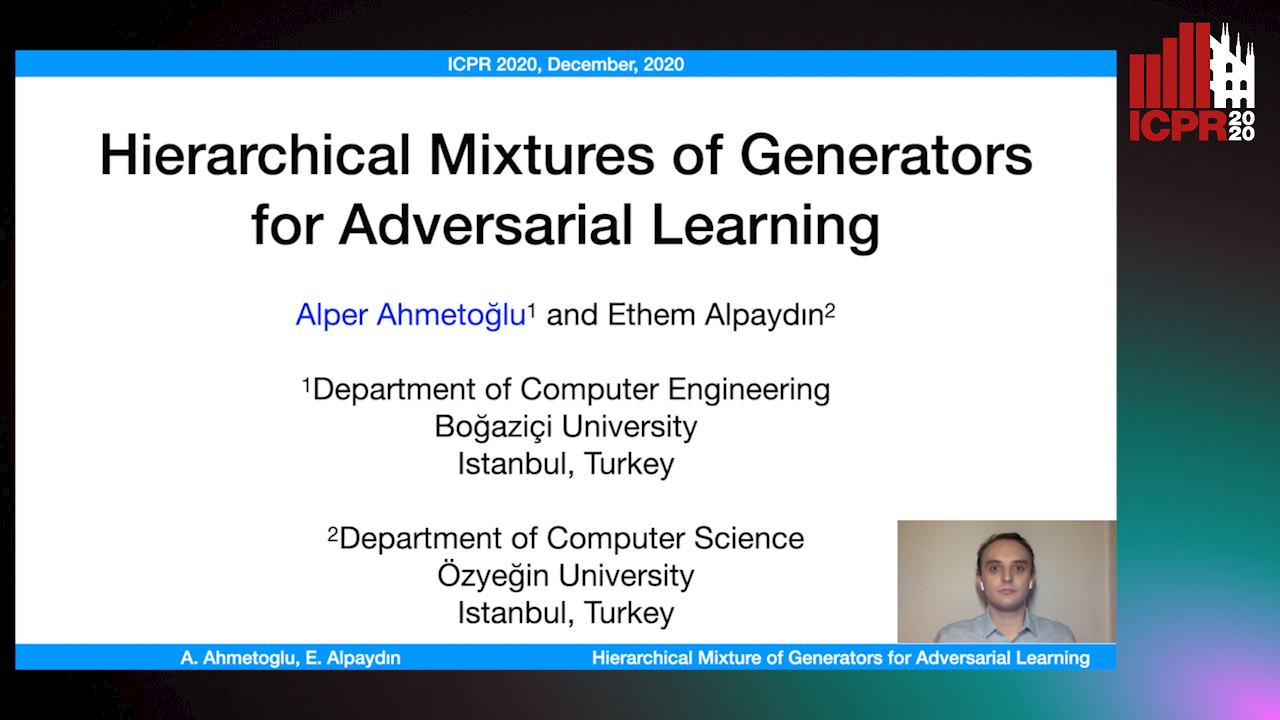
Auto-TLDR; Hierarchical Mixture of Generative Adversarial Networks
Leveraging a Weakly Adversarial Paradigm for Joint Learning of Disparity and Confidence Estimation
Matteo Poggi, Fabio Tosi, Filippo Aleotti, Stefano Mattoccia

Auto-TLDR; Joint Training of Deep-Networks for Outlier Detection from Stereo Images
Abstract Slides Poster Similar
Learning Disentangled Representations for Identity Preserving Surveillance Face Camouflage
Jingzhi Li, Lutong Han, Hua Zhang, Xiaoguang Han, Jingguo Ge, Xiaochu Cao

Auto-TLDR; Individual Face Privacy under Surveillance Scenario with Multi-task Loss Function
Motion and Region Aware Adversarial Learning for Fall Detection with Thermal Imaging
Vineet Mehta, Abhinav Dhall, Sujata Pal, Shehroz Khan

Auto-TLDR; Automatic Fall Detection with Adversarial Network using Thermal Imaging Camera
Abstract Slides Poster Similar
Optimal Transport As a Defense against Adversarial Attacks
Quentin Bouniot, Romaric Audigier, Angélique Loesch

Auto-TLDR; Sinkhorn Adversarial Training with Optimal Transport Theory
Abstract Slides Poster Similar
Semi-Supervised Class Incremental Learning
Alexis Lechat, Stéphane Herbin, Frederic Jurie

Auto-TLDR; incremental class learning with non-annotated batches
Abstract Slides Poster Similar
Verifying the Causes of Adversarial Examples
Honglin Li, Yifei Fan, Frieder Ganz, Tony Yezzi, Payam Barnaghi

Auto-TLDR; Exploring the Causes of Adversarial Examples in Neural Networks
Abstract Slides Poster Similar
Few-Shot Font Generation with Deep Metric Learning
Haruka Aoki, Koki Tsubota, Hikaru Ikuta, Kiyoharu Aizawa
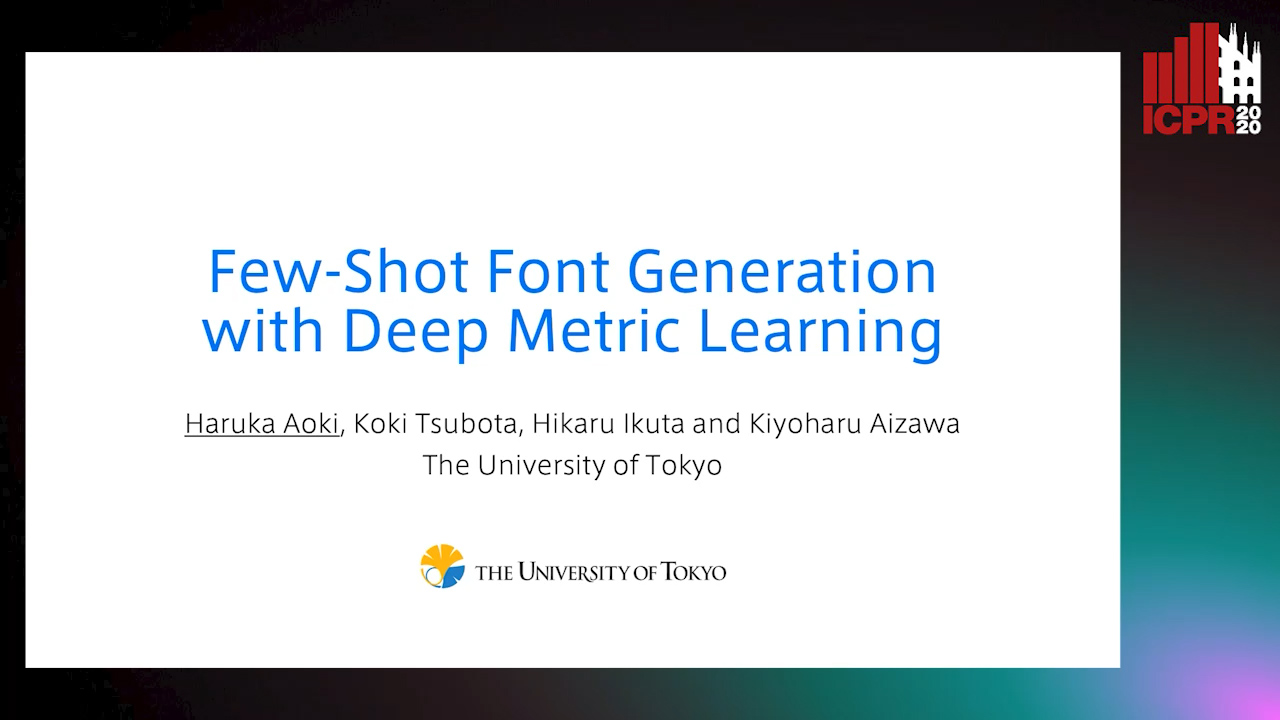
Auto-TLDR; Deep Metric Learning for Japanese Typographic Font Synthesis
Abstract Slides Poster Similar
Dual-Mode Iterative Denoiser: Tackling the Weak Label for Anomaly Detection
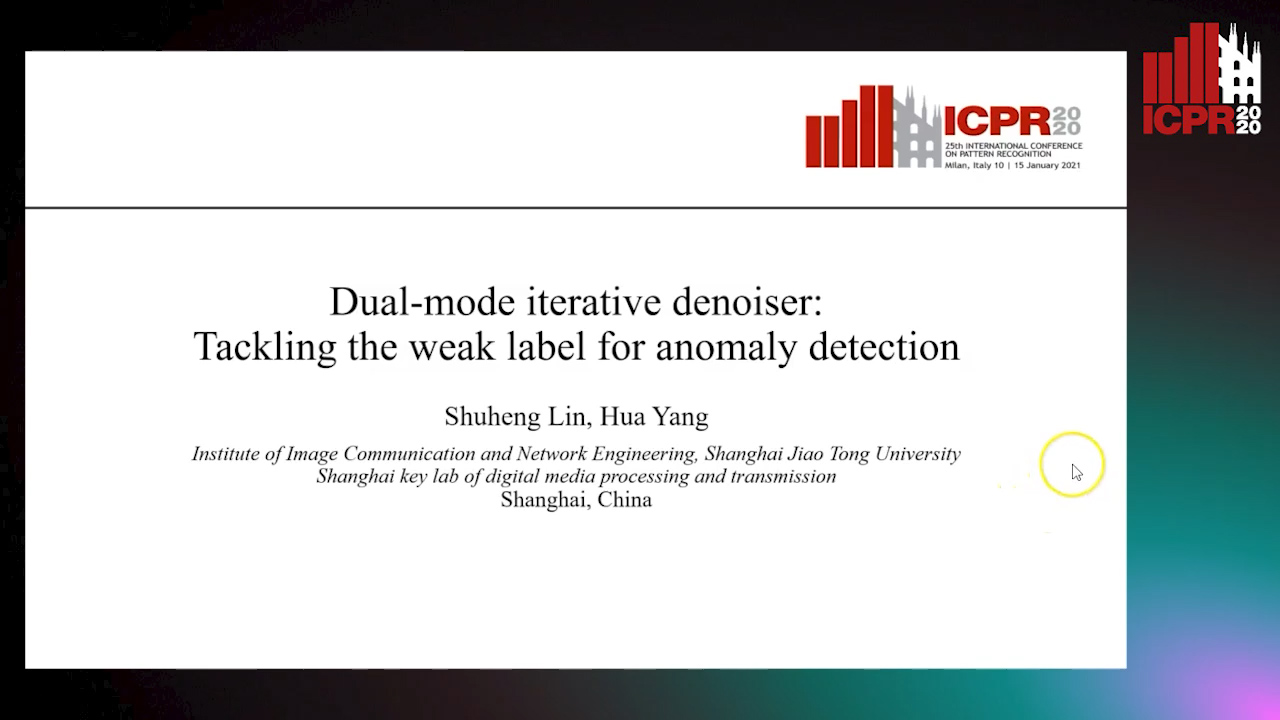
Auto-TLDR; A Dual-Mode Iterative Denoiser for Crowd Anomaly Detection
Abstract Slides Poster Similar